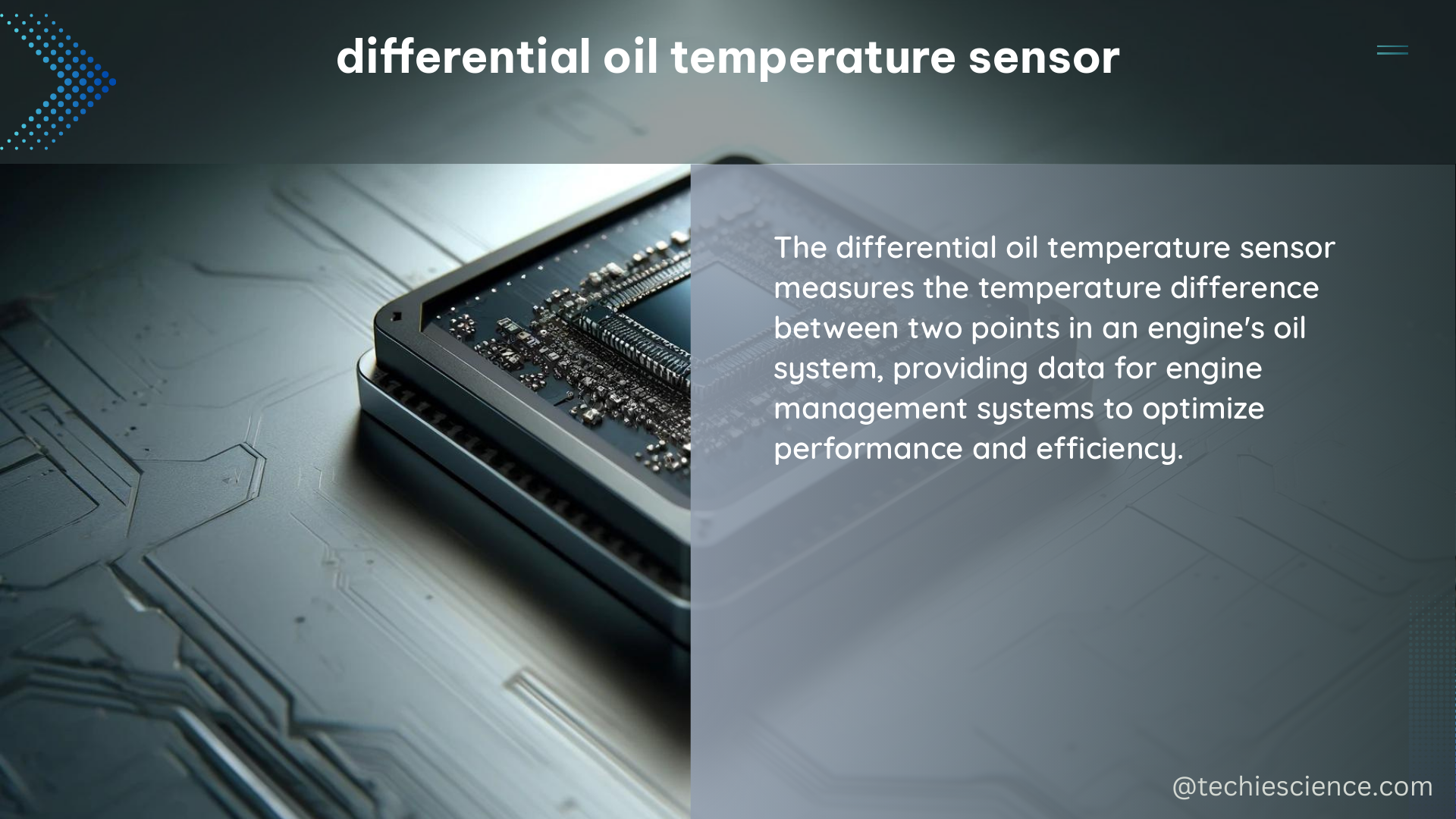The differential oil temperature sensor is a critical component in various systems, including automotive differentials, where it measures the temperature of the oil to ensure proper operation and prevent damage. The sensor works by detecting the temperature difference between the oil and the ambient environment, providing a precise and accurate measurement.
Understanding the Key Specifications
Thermal Coupling Resistance (R_TH)
The thermal coupling resistance (R_TH) of the differential oil temperature sensor determines how well it can detect temperature differences between the oil and the ambient environment. A lower R_TH value indicates better sensitivity and accuracy. Typically, the R_TH of a high-quality differential oil temperature sensor ranges from 0.1°C/W to 0.5°C/W, with lower values providing more accurate measurements.
Temperature Range
The temperature range of the differential oil temperature sensor defines the minimum and maximum temperatures it can measure. For automotive differentials, the typical temperature range is between -40°C and 150°C. This wide range ensures the sensor can accurately measure the oil temperature in various operating conditions, from extreme cold to high-heat environments.
Accuracy
The accuracy of the differential oil temperature sensor is a crucial factor, as it determines the reliability of the temperature measurements. Most high-performance sensors provide an accuracy of ±1°C to ±5°C, ensuring precise and reliable data for optimal system performance and protection.
Response Time
The response time of the differential oil temperature sensor indicates how quickly it can detect temperature changes. A faster response time, typically in the range of 0.1 to 1 second, ensures more accurate and reliable measurements, especially in systems where temperature changes occur rapidly, such as in high-performance automotive applications.
Calibration and Maintenance

To ensure proper operation and accuracy, the differential oil temperature sensor requires calibration. The calibration process involves measuring the sensor’s output at known temperature points and adjusting its settings accordingly. This ensures that the sensor provides accurate and reliable measurements throughout its temperature range.
Calibration Procedure
- Install the differential oil temperature sensor in the oil pan, ensuring proper thermal coupling with the oil.
- Measure the sensor’s resistance at room temperature (typically 20°C or 68°F).
- Measure the sensor’s resistance in ice water (0°C or 32°F).
- Measure the sensor’s resistance in boiling water (100°C or 212°F).
- Use these resistance measurements to calibrate the sensor and ensure accurate temperature readings.
Maintenance and Troubleshooting
Regular maintenance and inspection of the differential oil temperature sensor are essential to maintain its accuracy and reliability. This includes checking for any physical damage, ensuring proper installation, and monitoring the sensor’s performance over time. If the sensor is not providing accurate readings, it may need to be recalibrated or replaced.
Applications and Integration
The differential oil temperature sensor is widely used in various systems, including:
- Automotive Differentials: Monitors the temperature of the differential oil to prevent overheating and ensure proper lubrication.
- Industrial Gearboxes: Measures the temperature of the gearbox oil to optimize performance and prevent damage.
- Hydraulic Systems: Monitors the temperature of the hydraulic fluid to maintain system efficiency and prevent component failure.
- Bearing Monitoring: Detects changes in bearing temperature to identify potential issues and prevent catastrophic failures.
The sensor’s output is typically integrated with electronic control units (ECUs) or other monitoring systems to provide real-time temperature data and trigger alerts or protective measures when necessary.
Conclusion
The differential oil temperature sensor is a critical component in various systems, providing precise and accurate temperature measurements. Understanding its key specifications, calibration procedures, and maintenance requirements is essential for ensuring optimal system performance and preventing costly failures. By following the guidelines outlined in this comprehensive guide, you can ensure the reliable and accurate operation of your differential oil temperature sensor.
References:
- Thermal Coupling Resistance in Temperature Sensors
- Calibrating Oil Temperature Sensor
- Differential Oil Temperature Sensor Installation and Troubleshooting

The lambdageeks.com Core SME Team is a group of experienced subject matter experts from diverse scientific and technical fields including Physics, Chemistry, Technology,Electronics & Electrical Engineering, Automotive, Mechanical Engineering. Our team collaborates to create high-quality, well-researched articles on a wide range of science and technology topics for the lambdageeks.com website.
All Our Senior SME are having more than 7 Years of experience in the respective fields . They are either Working Industry Professionals or assocaited With different Universities. Refer Our Authors Page to get to know About our Core SMEs.